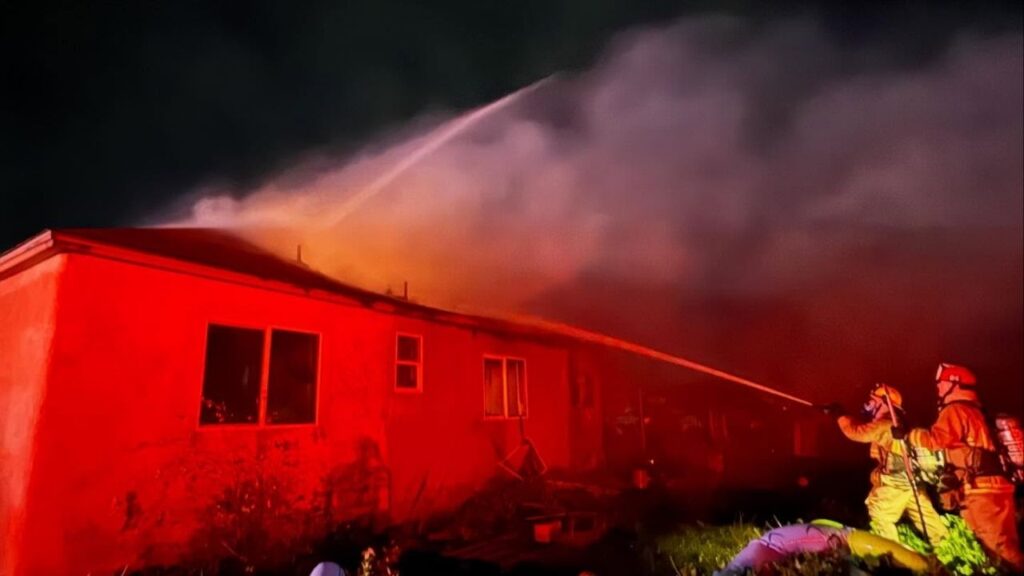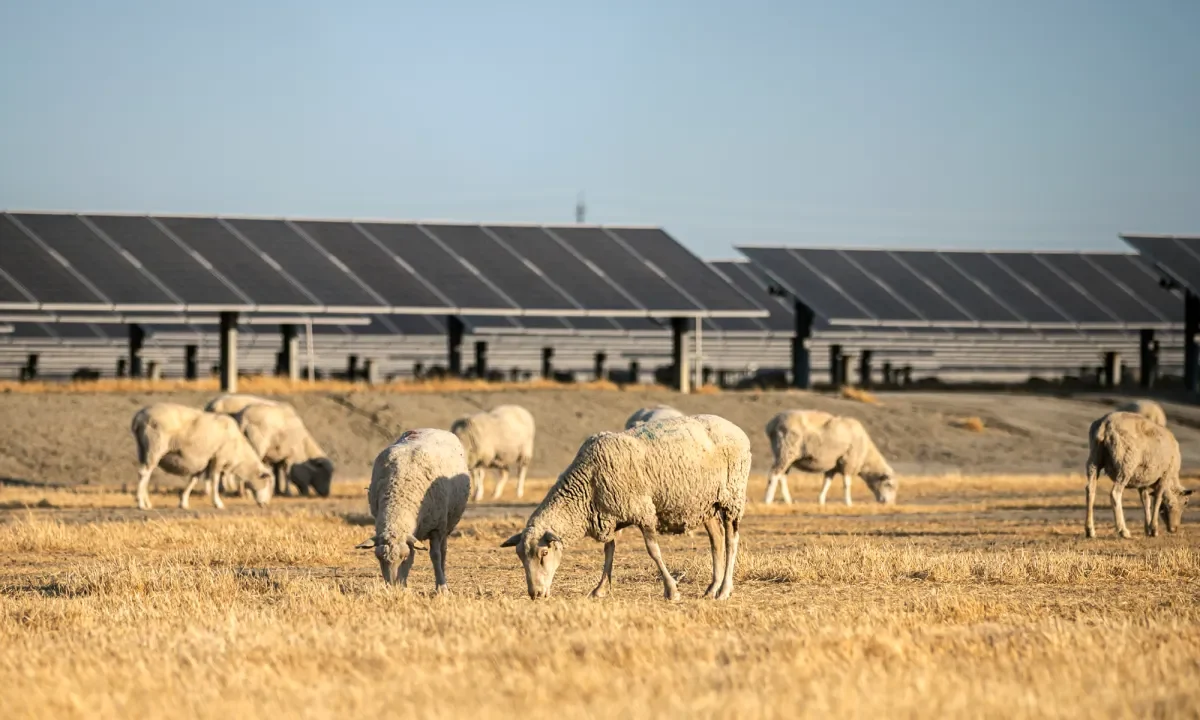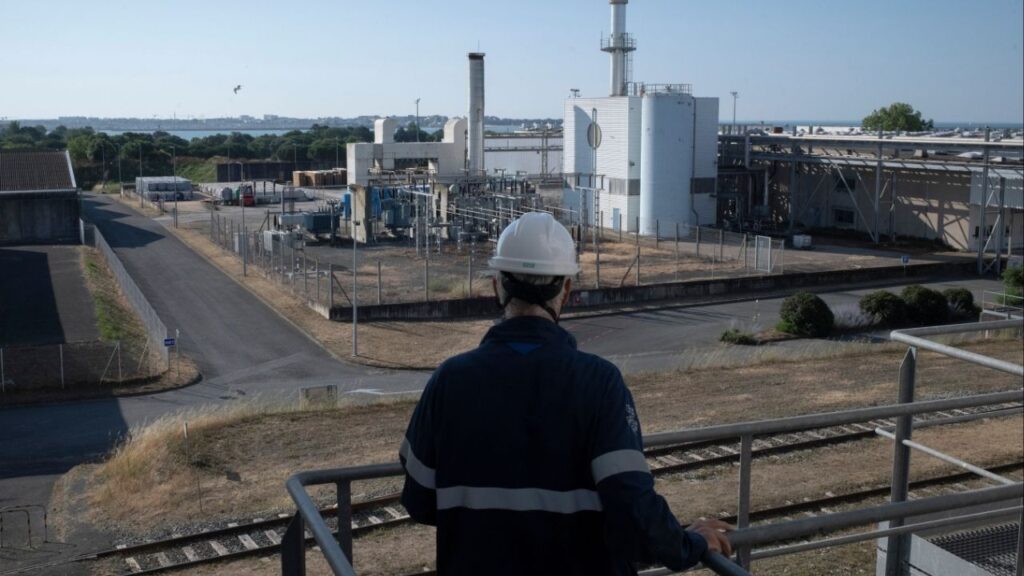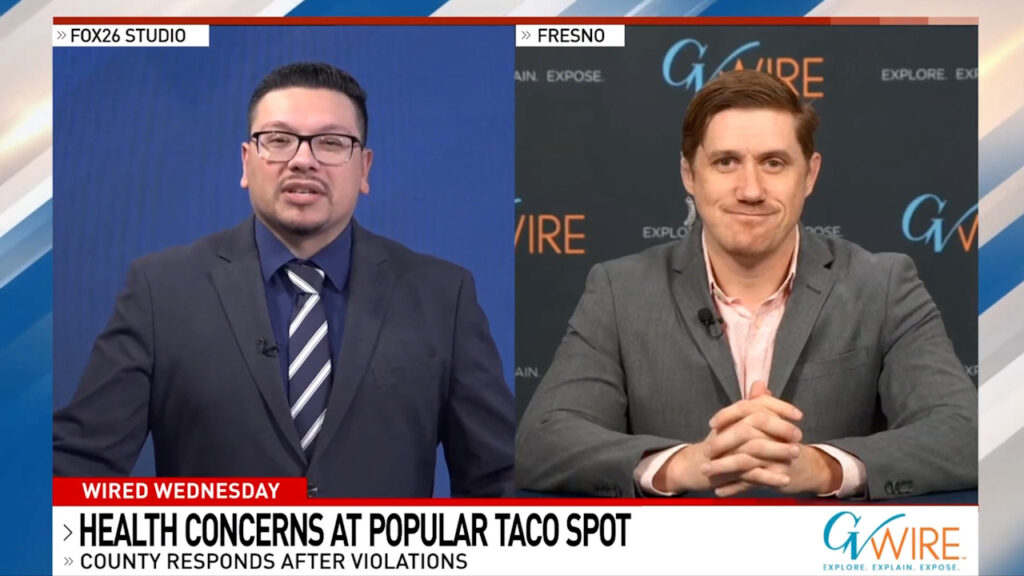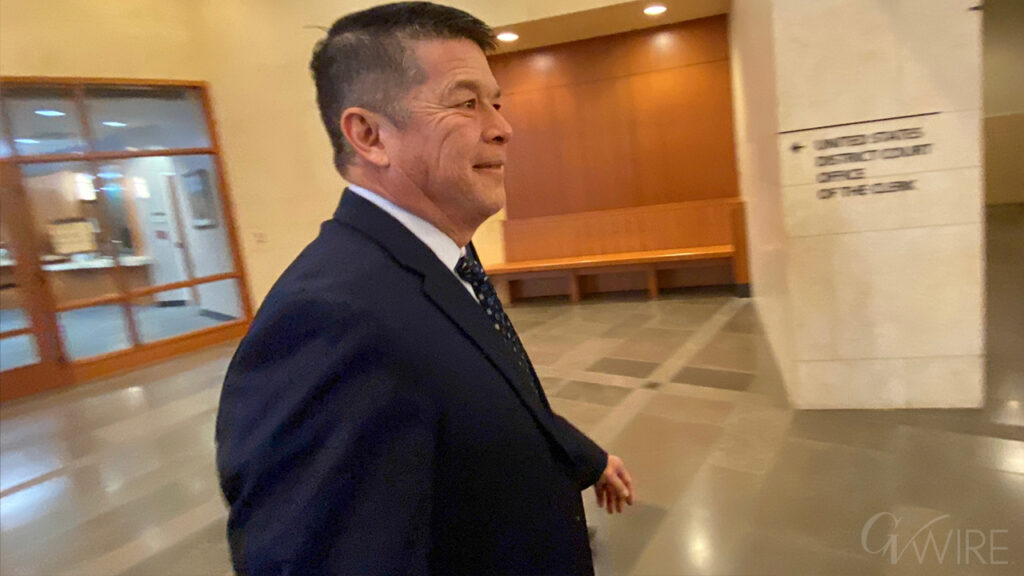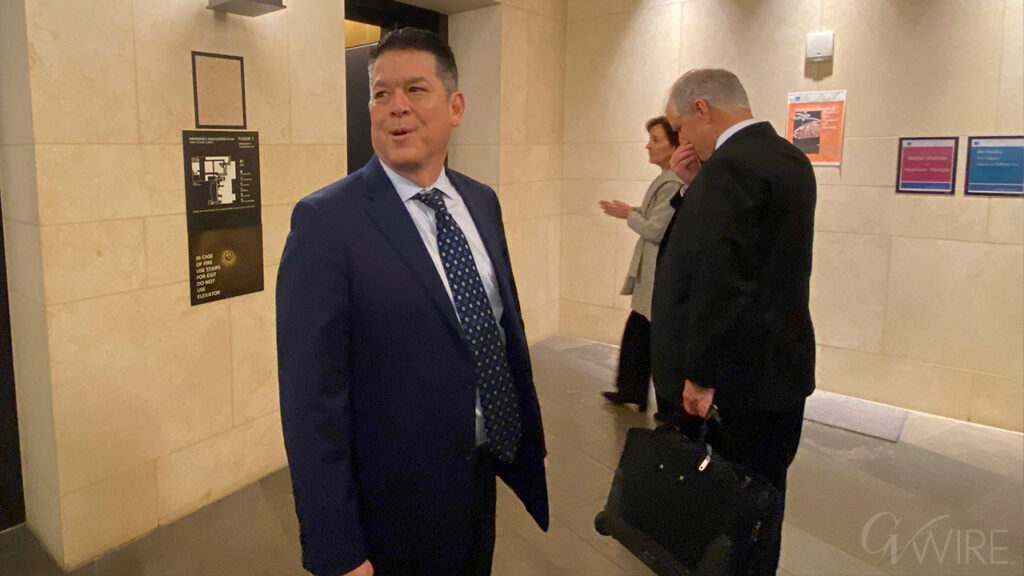Sheep graze near solar panels at the Kettleman City Power solar farm in Kings County, July 27, 2022. The sheep are allowed to graze on dry grass that could pose a fire hazard. (CalMatters/CatchLight Local/Larry Valenzuela)

- The state Department of Conservation says California's ag lands declined by more than 1.6 million acres between 1984 and 2018.
- With water shortages expected to force more land retirement, growers are converting their fields to solar farms.
- However, some farmers want productive ag lands protected from the solar conversions.
Share
|
Getting your Trinity Audio player ready...
|
This commentary was originally published by CalMatters. Sign up for their newsletters.
The Imperial Irrigation District, which provides water to farmers in the southeastern corner of California, drew a figurative line in the sand earlier this month, calling for a halt to the conversion of agricultural fields into solar panel farms.
Noting that more than 13,000 acres of fertile land had already been converted, the water district asked the Imperial County Board of Supervisors to protect productive farmland.
“Our identity and economy in the Imperial Valley are rooted in agriculture,” Gina Dockstader, who chairs the district board, said in a statement. “Solar energy has a role in our region’s future, but it cannot come at the cost of our farmland, food supply, or the families who depend on agriculture. This resolution is about protecting our way of life.”
The Imperial Valley conflict is one manifestation of an increasingly sharp debate within California’s $60 billion agricultural sector — the largest of any state — over what should happen as the acreage devoted to crops and livestock shrinks.
California Ag Lands Shrink by 1.6 Million Acres
The state Department of Conservation says that agricultural lands declined by more than 1.6 million acres between 1984 and 2018, averaging 47,000 acres a year. The most productive land experienced the largest decline. Urbanization — the conversion of fields into homes and businesses — accounted for most of the decline, but residential development has slowed in recent years, contributing to a chronic housing shortage.
Other factors, such as labor shortages, production costs and uncertain water supplies, have created what industry leaders say is a crisis. The Public Policy Institute of California has estimated that the recently imposed limits on tapping underground aquifers to irrigate crops will result in 500,000 acres of farmland being taken out of production.
More recently, President Donald Trump’s imposition of tariffs and a crackdown on undocumented immigrants have put more pressure on the agricultural industry.
As farmers, particularly the larger corporate growers, take land out of production, many believe that their economic salvation lies in solar panel arrays that generate the emission-free electricity that the state wants, as it phases out power fueled by hydrocarbons.
However, that doesn’t sit well with farmers who want to continue production, as the Imperial Irrigation District’s call for a solar moratorium implies.
Williamson Act Is Part of the Debate
Like many conflicts, this one has landed in the Capitol in the form of legislation. Assembly Bill 1156 would make it easier for farmers whose lands are contractually obligated to remain open space under the Williamson Act to avoid paying the heavy penalties required by law.
The Williamson Act, enacted six decades ago to slow the sprawl of urban development into farmlands, gives farmers hefty breaks on property taxes on land they maintain as open space. AB 1156 would specifically declare that farmers can replace crops with solar farms without incurring penalties if the owner is experiencing water shortages. The bill is backed by the solar power industry, environmentalists, labor unions and many large farmers.
The California Farm Bureau and family farm groups oppose it, arguing that it will undermine the Williamson Act because almost any farmer can declare a water shortage, given the chronic uncertainty of California water supplies. Emulating the Imperial Irrigation District’s stance, opponents say wholesale conversion of farmland into solar farms will devastate rural communities that depend on agriculture for jobs.
Politically, it’s a David vs. Goliath conflict. AB 1156, carried by Assemblywoman Buffy Wicks, an Oakland Democrat, has been moving briskly through the legislative process. It’s already cleared the Assembly and is likely to hit the Senate floor soon.
The solar farm displacement issue is only one of many factors that will determine the future of agriculture in California. The larger existential issue deserves more political attention than it’s getting.
Make Your Voice Heard
GV Wire encourages vigorous debate from people and organizations on local, state, and national issues. Submit your op-ed to bmcewen@gvwire.com for consideration.
This article was originally published on CalMatters and was republished under the Creative Commons Attribution-NonCommercial-NoDerivatives license.
RELATED TOPICS:
Categories

Fresno Police Arrest 14 at DUI Checkpoint
